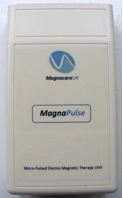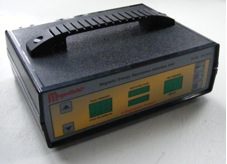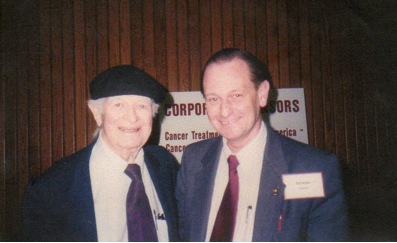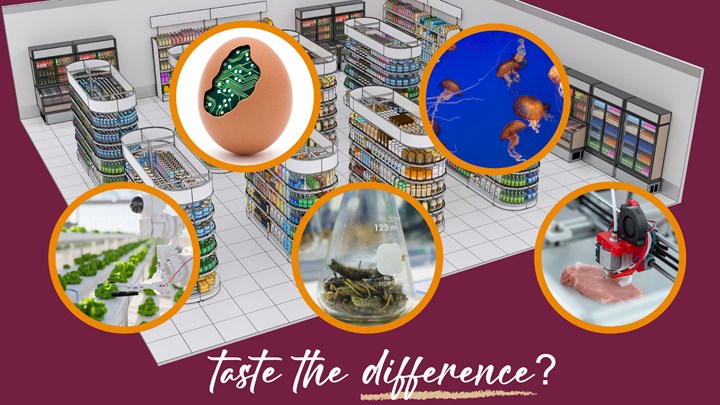Simon Best, editor of Caduceus magazine (www.caduceus.info) was invited by ANH-Intl to write a feature on a specific type of magnetic therapy using pulsed electromagnetic fields that he's followed for many years. It's an area that Simon rightly indicated ANH Europe has rarely covered in past articles. The technology he discusses has a 25-year plus history of use, initially in Australia, for a very wide range of purposes, from helping those suffering bone fractures, through to cancer patients and sufferers of chronic pain. The technology is has now become available in the UK. Manufacture of the units has already begun in Birmingham, UK. Read what Simon has to say about it and see if this is a form of therapy that makes sense to you.
The use of magnets for therapeutic purposes dates at least as far back as the ancient Egyptians, with their use of lodestone, a type of mineral magnetite. However, modern magnetic therapy only really began after 1945, starting in Japan and moving to Europe with great success, such that nearly all European countries produced their own devices between 1960 and 1985. The first book on the subject, by the Bulgarian scientist Todorov in 1982, summarised the treatment of 2,700 patients with 33 pathologies.
Impressive early results on bone healing
From 1970, Dr Andrew Bassett in the US researched the treatment of delayed fractures with very specific, low-frequency signals. In one study, a group of 83 adults with un-united fractures were examined for the effects of bone grafting and pulsed electromagnetic fields. A remarkably successful healing rate of 87% was achieved in the original 38 patients treated with bone grafts and a pulsed electromagnetic field (PEMF) for un-united fractures with wide gaps, malalignment and synovial pseudarthrosis. Of the 45 patients that were not successfully treated with PEMF and subsequently received bone grafting, re-treatment with PEMF was successful in a highly impressive 93% of cases.
Mainly as a result of Bassett and others' work, the US Food and Drug Administration (FDA) subsequently authorised the use of pulsed-modulated (as opposed to static) magnetic field devices for the treatment of bone fractures.
So much more than just bone benefits
Many other illnesses and conditions have now been investigated. Arthritis has been shown to respond well; Reynolds reported on a double-blind, placebo-controlled trial of foot and ankle arthrodes that showed significant improvement versus controls after 4 weeks [1].
Headache sufferers have also responded well. A 1988 study using once-daily PEMF on 90 sufferers of cervical, tension or migraine headaches observed good or excellent results after 15 days' treatment [2].
A Russian placebo-controlled study of arterial hypertensive patients demonstrated 76% effectiveness using a low-intensity PEMF signal twice daily for 5–10 days [3].
Multiple sclerosis (MS) patients also show benefit. In a study of word fluency performance in three female MS patients, all three showed 100% improvement after 4–5 sessions using very low levels of PEMF exposure.
Even cancer has been shown to respond: a recent study reported in the British Journal of Cancer found that the proliferation of liver and breast cancer cells significantly decreased after exposure to amplitude-modulated frequencies.
PEMF treatment of pain has been extensively studied. In a 2011 review of 27 randomised, double-blind, placebo-controlled studies, the 17 studies of static magnetic fields achieved, on average, no significant difference in pain relief. However, in 10 studies using PEMF, a range of effects was observed, from no effect to significant differences in pain relief between the patients given PEMF and controls.
Magnetic field properties
Electromagnetic fields are usually characterised by four parameters: waveform, frequency, intensity and on/off or exposure cycle. Part of the difficulty in comparing different study outcomes is the use of different combinations of these.
For those who like to understand more of the physics behind such devices, waveforms can be sinusoidal, sawtooth, square-form or various complex combinations of these. Frequency can run from less than a Hertz (Hz; one cycle per second) to very high frequencies into the megaHertz range (mHz; a million Hz) or above. Intensity or power density, usually measured in milli- (mT) or micro-Tesla (μT), can vary from extremely low levels equivalent to brainwave fields to very high-intensity fields that need to be well controlled. Finally, on/off time can also vary from picoseconds (10-12 s) to milliseconds (10-3 s).
Despite this wide range of experimental exposures, there is a general consensus that PEMF devices can relieve a wide variety of conditions.
Magnacare
A recent arrival to the UK is a device that was originally developed by an Australian doctor, Dr Robert Grace, and sold worldwide for over 25 years, with a large number of testimonials to its efficacy.

The MagnaPulse unit, for portable use.
His best results were achieved by approximating human brain waves in terms of both frequency (0–30 Hz) and waveform. Using a low-intensity signal (0.3 mT) and an on/off cycle that allows cells to rest between exposures, rather than receive a continuous signal, Dr Grace treated a wide variety of human conditions. For example, recovery from athletic injury was considerably accelerated. Vets also use it to treat various animal conditions, including those in horses.

The Magnafield unit, for home/office use.
Dr Grace lectured on PEMF around the world, was a friend of Professor Linus Pauling – winner of two unshared Nobel Prizes and advocate of high-dose vitamin C – and in 25 years never had a single unit returned.

Dr Robert Grace with Professor Linus Pauling.
Two units, one for home/office use, one portable, are now being manufactured near Birmingham, UK. Dr Michael Clark, MD of MagnacareUK, said, “I was very impressed with the pain and inflammation relief that the unit induced, together with all the testimonials to its other effects, which convinced me to take up the offer by Dr Grace’s widow to produce it here to make it more available to UK sufferers seeking a non-drug alternative.”
References
[1] Reynolds JC. 2nd World Congress for Electricity and Magnetism in Biology and Medicine, 8–13 June, 1997, Bologna, Italy.
[2] Prusinski A et al. J Bioelectricity 1988;7(1):127–8.
[3] Orlov LL et al. Indications for Using a New Magnetotherapeutic Method in Arterial Hypertension. Soviet Med 1991;8:23–4.








Comments
your voice counts
There are currently no comments on this post.
Your voice counts
We welcome your comments and are very interested in your point of view, but we ask that you keep them relevant to the article, that they be civil and without commercial links. All comments are moderated prior to being published. We reserve the right to edit or not publish comments that we consider abusive or offensive.
There is extra content here from a third party provider. You will be unable to see this content unless you agree to allow Content Cookies. Cookie Preferences